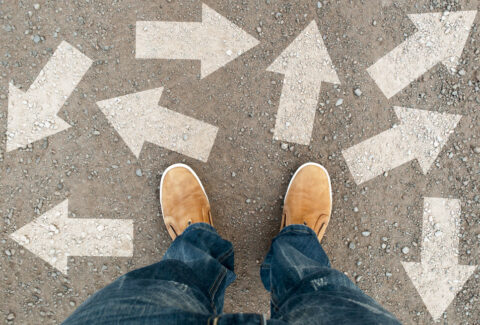Setting Goals in Contingency Management: A Strategic Approach to Behavior Change

Setting Goals in Contingency Management: A Strategic Approach to Behavior Change
Contingency management (CM)[1] represents a powerful behavioral therapy approach centered on the principles of reinforcement and behavior modification. At its core, the effectiveness of CM hinges on the establishment of clear, achievable goals that guide interventions and drive positive behavior change.[2] Setting these goals requires careful consideration of individual needs, behavioral patterns, and treatment objectives. This article explores the significance of goal setting in CM, offering insights into strategies and best practices for clinicians and clients alike.
Importance of Goal Setting in CM
Goal setting in CM serves as a roadmap for both clinicians and clients, providing a structured framework to work towards desired behavior changes. Clear goals enhance treatment efficacy by:
- Providing Direction: Goals outline specific behaviors or outcomes that clients aim to achieve, offering clarity and focus throughout the treatment process.[3]
- Motivating Behavior Change: Well-defined goals serve as motivational targets, encouraging clients to actively engage in therapeutic activities and strive towards positive outcomes.[4]
- Measuring Progress: Goals enable objective measurement of behavior change over time, facilitating ongoing assessment and adjustment of intervention strategies.[5]
Key Principles in Goal Setting
- Specific and Measurable Objectives
Effective goals in CM are specific and measurable, defining precisely what behavior is targeted and how progress will be evaluated. For instance, instead of setting a vague goal like “improve attendance,” a specific goal could be “attend all scheduled therapy sessions for the next four weeks.” - Action Oriented and Relevant Targets
Goals should be challenging, action-oriented and based on the client’s capabilities and resources. Irrelevant goals can lead to disengagement, whereas action-oriented targets build confidence and motivation.[6] - Time-Bound Deadlines
Setting time-bound deadlines helps create urgency and accountability. Establishing deadlines for achieving specific milestones ensures that progress is monitored regularly, and interventions are adjusted as needed. - Client-Centered Approach
Involving clients in goal setting promotes collaboration and empowers them to take ownership of their treatment journey. Clients are more likely to commit to goals that align with their values, preferences, and motivations.
Strategies for Effective Goal Setting
- Initial Assessment and Collaboration
Begin by conducting a comprehensive assessment to understand the client’s behavior patterns, strengths, challenges, and treatment goals. Collaborate with the client to identify priorities and establish mutual agreement on realistic goals. - SMART Goal Framework
Apply the SMART criteria (Specific, Measurable, Action-oriented, Relevant, Time-bound) to formulate goals that are clear, precise, and actionable.[7] This framework ensures that goals are well-defined and facilitate effective measurement of progress. - Behavioral Contracts
Formalize goals and reinforcement strategies through behavioral contracts[8] or agreements. These documents outline expectations, consequences for meeting or not meeting goals, and the reinforcement schedule agreed upon with the client. - Regular Monitoring and Feedback
Monitor progress regularly and provide constructive feedback to clients. Adjust goals or interventions based on ongoing assessment to maximize effectiveness and maintain client motivation. - Evidence-Based Benefits of Goal Setting in CM
Research underscores the efficacy of goal setting in CM interventions. Studies indicate that clients who participate in goal-setting processes are more engaged in treatment and achieve better outcomes compared to those with less structured interventions.[9]
Conclusion
Setting goals in contingency management is not merely a procedural step but a fundamental component of effective behavioral therapy. By establishing clear, achievable objectives, clinicians empower clients to actively participate in their treatment, enhance motivation, and facilitate meaningful behavior change. This strategic approach, grounded in evidence-based principles and client-centered care, exemplifies the transformative potential of contingency management in promoting positive outcomes across diverse clinical settings.
In essence, goal setting in CM represents a collaborative journey towards behavior change, emphasizing empowerment, accountability, and the pursuit of holistic well-being. Through strategic goal setting, clinicians and clients alike can navigate the path towards sustained behavioral improvements and enhanced quality of life.
[1] Stitzer, Maxine, and Nancy Petry. “Contingency management for treatment of substance abuse.” Annu. Rev. Clin. Psychol. 2.1 (2006): 411-434.
[2] Bartholomew, N. G., G. A. Rowan-Szal, and D. D. Simpson. “Contingency management strategies and ideas.” Fort Worth, TX: Texas Christian University, Institute of Behavioral Research (2005).
[3] McPherson, Sterling M., et al. “A review of contingency management for the treatment of substance-use disorders: adaptation for underserved populations, use of experimental technologies, and personalized optimization strategies.” Substance Abuse and Rehabilitation (2018): 43-57.
[4] Nastasi, Jessica A., Rebecca D. Sheppard, and Bethany R. Raiff. “Token‐economy‐based contingency management increases daily steps in adults with developmental disabilities.” Behavioral Interventions 35.2 (2020): 315-324.
[5] Forster, Sarah E., Dominick DePhilippis, and Steven D. Forman. ““I’s” on the prize: A systematic review of individual differences in Contingency Management treatment response.” Journal of substance abuse treatment 100 (2019): 64-83.
[6] Stitzer, Maxine, et al. “Development of a multi-target contingency management intervention for HIV positive substance users.” Journal of substance abuse treatment 72 (2017): 66-71.
[7] Beaulieu, Michelle. “The Effects of Behavioral Skills Training for Goal Setting on Skill Acquisition.” (2024).
[8] Adams, Claire E., et al. “Contingency management for patients with cooccurring disorders: Evaluation of a case study and recommendations for practitioners.” Case Reports in Psychiatry 2012.1 (2012): 731638.
[9] Petry, Nancy M. Contingency management for substance abuse treatment: A guide to implementing this evidence-based practice. Routledge, 2013.






